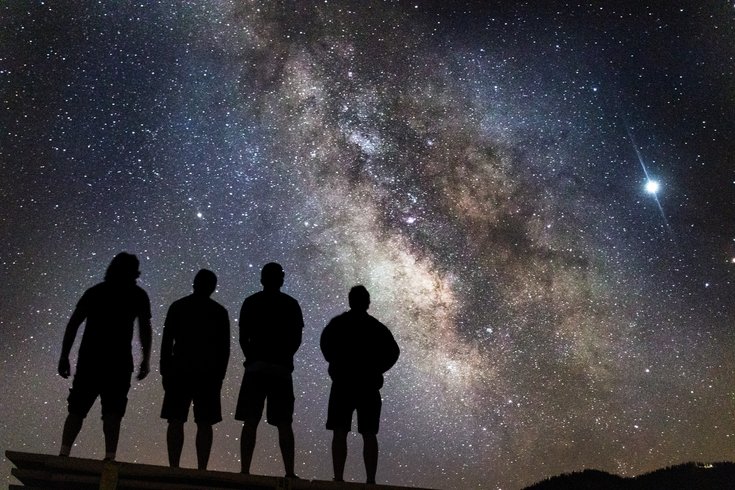
September 09, 2023
 Kendall Hopes/Pexels
Kendall Hopes/Pexels
The recently discovered Comet Nishimura will reach its closest point to earth on Tuesday, Sept. 12. It will be visible in the Northern Hemisphere and then won't be seen again for 400 years. This photo is a stock image of people stargazing.
During the the next couple days, a recently discovered comet should be visible in the early morning sky. Comet Nishimura, which was identified in August, will reach its closest point to Earth on Tuesday. Leading up to then, you may be able to spot the comet, which should be visible to the naked eye, each day before sunrise.
The head of the comet glows in a distinctive green color, which is attributed to "highly reactive" carbon molecules. This comet also is unique because of how it was discovered — by man rather than machine.
MORE: Flamingos spotted in Pennsylvania for first time after being swept from Florida by Hurricane Idalia
"Historically, comets have been identified by sky observers who have become really familiar with a few constellations," Derrick Pitts, chief astronomer at the Franklin Institute, said. "That work has mostly been taken over, though, by instruments that do automatic surveys of the night sky on a regular, frequent basis, and their sensitivity typically is much higher. And they've been able to identify comets much earlier than humans."
On Aug. 12, the comet was discovered by Hideo Nishimura, an amateur astronomer in Japan, who was imaging the night sky using a digital camera to record 30-second exposures.
Since its discovery, the comet has increased in brightness and will continue to intensify as it heads toward the sun. Although it should become visible without a telescope or any special equipment, Pitts said as of Friday that had not occurred yet.
For the best chance of seeing Comet Nishimura, it's recommended that stargazers binoculars or telescopes and attempt to view the comet somewhere the sky is clear and dark. Pitts said the comet will look like a "cotton ball" with a slight, narrow tail.
The stunning comet ☄️C/2023 P1 Nishimura, captured in all its glory 12 hours ago.
— Virtual Telescope (@VirtualTelescop) September 5, 2023
🔴 FULL RES IMAGE here 📷🔭:https://t.co/QD3ZNwz5DT pic.twitter.com/HfMKWGRpoA
Over the weekend, Nishimura will appear about an hour and a half before sunrise, near the constellation Leo, east-northeast in the sky. In subsequent days, it will make its appearance closer to sunrise and will continue moving closer to the horizon, and Pitts said the glare from the sun will make difficult to see.
"I bill this as something, for those people who have to be up at that time of day ... as a reward for their having to be up at that time of day," Pitts said.
The weather could also be a factor in the comet's visibility the next few days. The comet will vanish from Northern Hemisphere after Wednesday.
Here's my finder chart for Comet C/2023 P1 (Nishimura) when it should be visible in the evening sky after sunset, from the 11th to the 18th of September. pic.twitter.com/XNDJteafaN
— Dave Eagle FRAS 🔭 Keep Looking Up. (@Dave_StarGeezer) September 7, 2023
Track the trajectory of comet Nishimura as it traverses the Solar System during August-September 2023 ☄️ By September 11, this comet is expected to be observable without the aid of a telescope. Visit our website for further information regarding this celestial phenomenon! #Comet pic.twitter.com/hmdgbFhvvt
— Byte Blast (@Byte_blast) September 1, 2023
Though comets are like dirty snowballs, covered with bits of rock, dust and dirt, Pitts said they transport bits of space history within them. "They are, essentially, the cold storage museums of the early history of the solar system," he said, "because the material that's frozen into the nucleus is leftover from the beginning of the solar system."
It's now or never, if you want to see Comet Nishimura. It will take about 435 years before the path of its obit brings it past Earth again..
"If you're ambitious, get a pair of binoculars and try to track this thing down over the next couple of days," Pitts said. "At least you'd have the opportunity to see a celestial visitor to our solar system."
Follow Franki & PhillyVoice on Twitter: @wordsbyfranki
| @thePhillyVoice
Like us on Facebook: PhillyVoice
Have a news tip? Let us know.